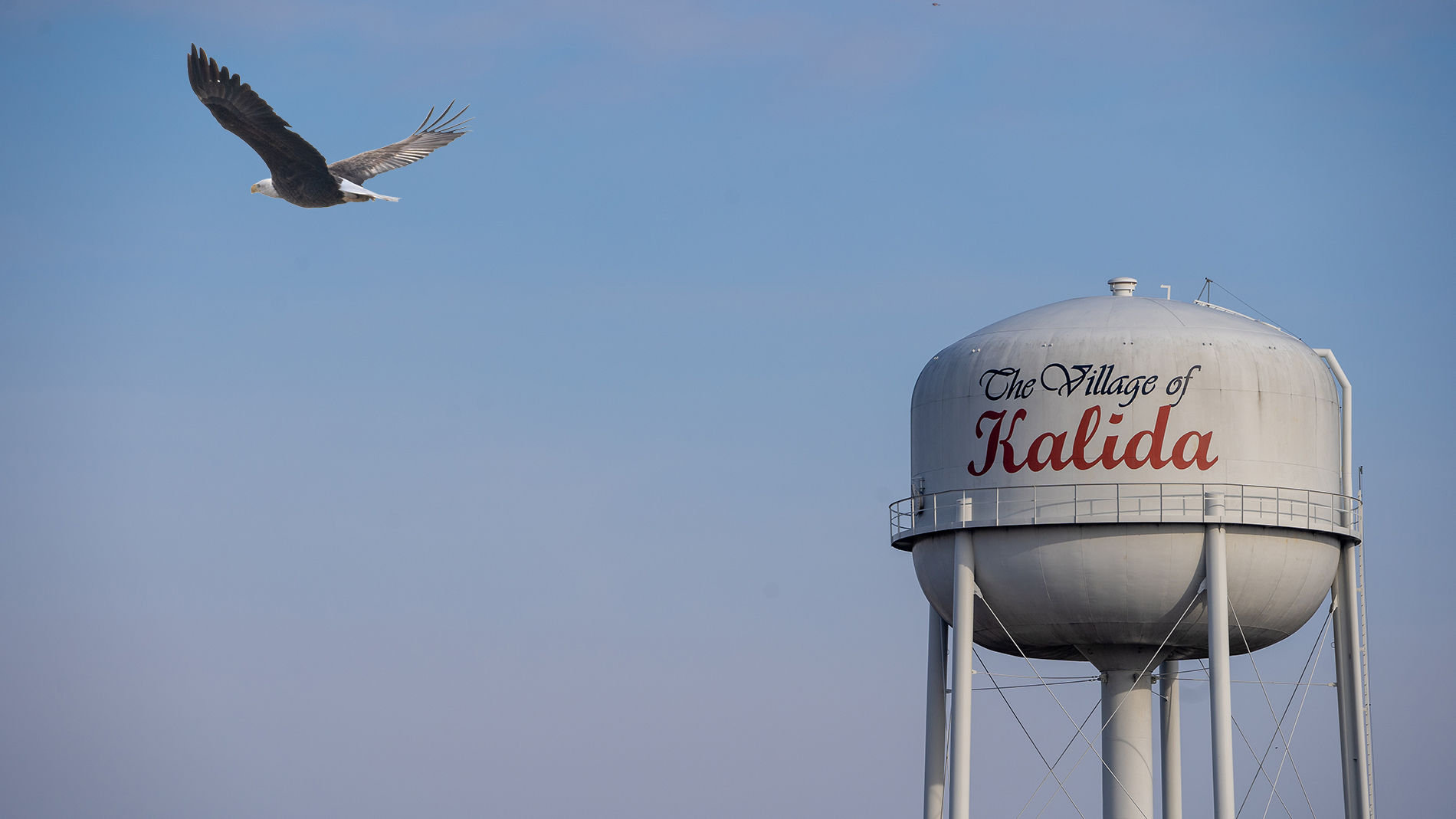
The Early History of the Village of Kalida
In the same act which created the county of Putnam, which was passed January 3, 1834, and is to be found in the 32d volume of Ohio Laws, Page 19, there is contained a provision for the appointment of a Town Director, who should proceed to select and survey one hundred and sixty acres of land in section 5, township one south, range 6 east, in Putnam county, and under the direction of the County Commissioners lay out a town thereon, the inlots whereof should not occupy more than sixty acres; that upon receiving a copy of such plat the Governor of Ohio (Section 5 being a part of the canal lands granted by the United States to aid in the construction of the Miami & Erie canal) was requested to execute a deed for the 160 acres to the commissioners of the county, and the town so laid out should be the county seat of Putnam county.
The Town Director with the Commissioners were to sell lots for cash or credit, as the commissioners should elect, and from the proceeds of the lots, after paying the expenses of surveying, record, platting and selling, to pay to the State the sum of two hundred dollars, the remainder of the proceeds to be into the treasury of the county for the use and benefit of the county.
At its first session, May 5, 1834, Abraham Sarber was appointed by the Court of Common Pleas as Town Director, and Thomas Gray, William Priddy and Samuel Meyers, County Commissioners, and F. C. Fitch, County Surveyor. The Commissioners and Town Director selected for the county seat the southeast quarter of that section and with the County Surveyor laid out and platted the town as provided in the act of the Legislature, and the town so laid out was named Kalida (The Beautiful) and became the seat of justice of the county. For the first year, by the same act, it was provided that the Court of Common Pleas be held at the home of Abraham Sarber.
On the 16th of February, 1839, Kalida was incorporated by act of Legislature and the Mayor and Council were elected. Four years later the inhabitants seem to have found the burden of corporate powers too heavy for them to bear, for we find that on March 14, 1843, presumably at the instigation of the town itself, the Legislature repealed the act of incorporation, retaining the Council in office for one year “to settle the business of the corporation,” and in 1844 the powers of the Council were by act of the Legislature again extended for three years longer, or until 1847, at which time their powers ceased.
The town, although it was the county seat, grew slowly until about 1840, when the increase in the number of settlers in the county and the opening up of many farms attracted to the county seat a number of young and active citizens. By 1850 the population of the county had increased from 250, in 1830, to more than 7,000 inhabitants, and Kalida increased proportionally, gathering into it as a center much of the best brains and business energy of the county, and in 1854, the time when the writer first became well acquainted there, it contained a population far above the average in intelligence and was noted for its social and intellectual progress. Among its citizens were numbered men who have since taken high standing politically and professionally, as Legislators, judges, and soldiers. Among the most prominent names which occur to the writer among the early settlers at Kalida are Judges Metcalf, Morris, Ball, Mackenzie and McClure, Col. Ball, Gen. A. V. Rice, Capts. George McClure, Thomas G. Allen and James Gribben, Major Robert Thrift, Senator C. M. Godfrey and several members of the Legislature, among whom were David I. Brown, W. H. Ball and James Mackenzie. The Lees, the McCrackens, the Sarbers, the Rices, the Spencers, the Parkers, the McClures, and the lamented secretary of our County Pioneer Society, George Skinner, were among the most prominent of the early settlers of the town.
In 1836 Guthrie and Sarber built a grist mill on Hog Creek at Kalida, the second and at that time the most important water mill in the county.
The first court house, a temporary frame was built about 1835, and the second, a brick one, was completed in 1839 or 1840, and was a very imposing structure for the period. A fire in the Recorder’s office about 1862 injured and destroyed many of the records, and in the winter of 1864-65 the court house was entirely destroyed by fire, the old defaced record books being entirely destroyed, but the transcribed ones were preserved.
Smaller brick structures for the accommodation of the county offices were immediately built upon the court house grounds, where the business of the county was carried on until in 1866 when the county seat was removed to Ottawa. For a while Kalida seemed to stagnate, but under the impetus given by the construction of the Findlay, Ft. Wayne & Western railroad which affords an outlet, and the prospective completion of the Columbus, Lima & Milwaukee railroad through it, the town has taken a fresh start and the improvement in its business and appearance is very marked.
Copied from the Putnam County Atlas printed in 1895

